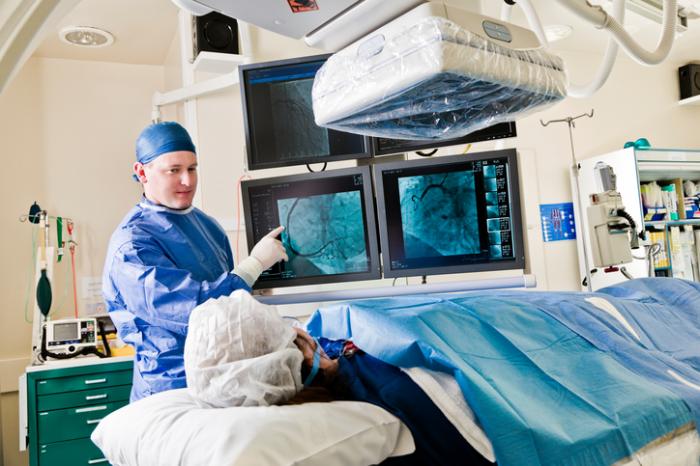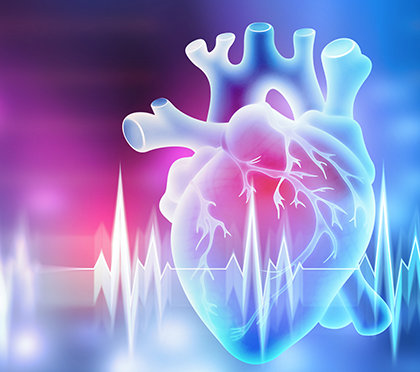Supporting older adults with tailored Cardiology care plans
Supporting older adults with tailored Cardiology care plans
Blog Article
Comprehending the Relevance of Cardiology in Modern Healthcare Services
Cardiology plays a critical duty in modern health care, especially as heart illness proceeds to be the leading source of death worldwide. Breakthroughs in diagnostics and treatment have actually transformed client treatment, enabling earlier interventions and boosted results. The change in the direction of preventative cardiology equips people to manage their wellness proactively. As modern technology continues to evolve, the integration of innovative remedies may better redefine cardiology's effect on public wellness, triggering a closer evaluation of emerging patterns and their ramifications.
The Occurrence of Heart Condition and Its Impact on Public Wellness
Heart illness stays the leading cause of death worldwide, its impact prolongs much past private clients to impact public wellness systems and economic situations. The high frequency of cardiovascular disease puts a considerable stress on health care resources, demanding raised financing for treatment, avoidance, and recovery programs. Public health and wellness campaigns must address threat aspects such as obesity, smoking cigarettes, and inactive lifestyles, which add significantly to the rising occurrence of heart conditions.Moreover, the economic problem connected with heart problem is enormous, including not only direct clinical expenses however additionally indirect expenditures connected to lost productivity and early death. Neighborhoods deal with obstacles in managing these expenses, usually leading to disparities in medical care access and outcomes. As the population ages and lifestyle-related threats continue to rise, the urgency for effective cardiology interventions becomes vital. Attending to heart disease is not just an issue of specific health and wellness however additionally an important public wellness top priority.
Advancements in Heart Diagnostics and Imaging Techniques
Recent innovations in cardiac diagnostics and imaging strategies have actually transformed the area of cardiology, improving the capacity to keep track of and discover cardiovascular disease. Strategies such as cardiac MRI, CT angiography, and echocardiography have actually become increasingly advanced, supplying thorough pictures of heart structures and functions. These modalities enable the early recognition of conditions like coronary artery disease, heart failure, and valvular disorders.Moreover, improvements in non-invasive diagnostics, such as wearable modern technology and remote surveillance devices, have equipped clients and doctor. These tools assist in real-time monitoring of heart rhythms and various other essential indications, causing prompt treatments. Additionally, expert system is being incorporated right into imaging evaluation, boosting accuracy and effectiveness in diagnosis.
Advancements in Therapy Options for Heart Issues
Recent innovations in cardiology have actually brought about substantial advancements in therapy options for heart disease. These include innovative medical strategies that boost step-by-step outcomes and emerging medications that offer new opportunities for treatment. As the field progresses, these developments play a vital role in enhancing person care and end results.
Advanced Surgical Techniques
Technologies in medical techniques have changed the landscape of cardiology, supplying brand-new wish for people with heart conditions. Minimally intrusive treatments, such as catheter-based treatments, have substantially reduced recovery times and medical facility remains. Strategies like robotic-assisted surgical treatment improve precision, allowing doctors to browse complicated physiological structures with higher precision. Additionally, innovations in imaging innovation help with real-time visualization during procedures, boosting results. Transcatheter aortic shutoff replacement (TAVR) exemplifies a development in treating aortic stenosis, enabling valve replacement without open-heart surgical treatment. In addition, hybrid techniques that incorporate medical and catheter-based methods give customized services for different cardiac issues. These sophisticated medical techniques not only improve individual safety and security however likewise broaden therapy options, emphasizing the vital role of innovation in modern cardiology methods.
Emerging Medications and Therapies
As the landscape of cardiology continues to advance, emerging medications and therapies play an essential function in boosting treatment alternatives for heart disease. Innovations such as novel anticoagulants and advanced lipid-lowering representatives have changed the management of cardiovascular conditions, substantially reducing patient morbidity and death. In addition, the development of genetics therapies and regenerative medication uses encouraging methods for dealing with conditions formerly considered incurable. Scientific tests are continuously revealing the efficacy of these therapies, pushing the borders of conventional therapies. The assimilation of electronic health innovations promotes personalized medicine, permitting for tailored treatment strategies based on hereditary and way of living variables. Jointly, these improvements underscore the vibrant nature of cardiology, boosting person end results and redefining requirements of care in contemporary health care.
The Duty of Preventive Cardiology in Person Treatment
Preventive cardiology plays a vital duty in person treatment by concentrating on the identification of risk factors that add to cardiovascular disease. Via way of living alteration approaches and very early discovery strategies, medical care providers can efficiently decrease the incidence of cardiovascular events - Cardiology. This positive technique not only improves patient outcomes yet also advertises long-term health
Risk Factor Recognition
While heart diseases remain a leading root cause of morbidity and death worldwide, effective risk factor identification serves as a cornerstone of preventative cardiology. Recognizing threat elements such as hypertension, diabetic issues, family, and hyperlipidemia history is vital for early treatment. Health care professionals make use of various evaluating methods to review these variables, permitting tailored safety nets. In addition, comprehending a patient's way of life choices, such as smoking cigarettes and physical lack of exercise, further notifies danger analyses. This complete evaluation allows medical professionals to establish tailored care strategies targeted at mitigating risks. By prioritizing threat factor recognition, healthcare systems can improve person outcomes and decrease the total concern of heart diseases, inevitably adding to boosted public health and wellness methods and source allocation.
Way Of Life Alteration Approaches
A wide range of researches highlights the critical role of way of life adjustment approaches in reducing cardiovascular illness risk. These techniques include dietary modifications, boosted exercise, smoking cessation, and weight management. By embracing a heart-healthy diet regimen abundant in fruits, veggies, entire grains, and lean healthy proteins, people can decrease cholesterol degrees and blood pressure. Regular physical activity enhances the heart and enhances overall cardio health. Additionally, quitting smoking significantly decreases the threat of heart problem and enhances recovery rates for those with status quo. Weight administration even more adds to cardio wellness by alleviating various other threat elements such as diabetic issues and high blood pressure. Implementing these way of living changes not just advertises individual wellness however likewise acts as a foundation of precautionary cardiology in person care.
Very Early Discovery Techniques
Way of life adjustments greatly add to lowering heart disease dangers, however they are most reliable when coupled with very early detection strategies. Preventive cardiology highlights the importance of determining potential heart issues prior to they intensify right into significant conditions. Methods such as high blood pressure monitoring, cholesterol testing, and advanced imaging innovations like echocardiograms play crucial roles in reviewing cardio wellness. Biomarkers and hereditary screening also boost the precision of very early detection, permitting tailored preventive strategies. Normal cardiac threat examinations equip doctor to intervene proactively, possibly stopping heart strikes and strokes (Dr Garcia). By integrating these early detection approaches into regular treatment, clients can gain from prompt lifestyle treatments and targeted therapies, inevitably boosting and boosting results lifestyle
Integrating Technology Into Cardiology Practices
As innovations in innovation remain to improve various fields, the combination of ingenious tools and systems right into cardiology methods has actually come to be important for boosting patient care and results. Telemedicine platforms allow cardiologists to keep track of patients remotely, boosting access to care while lowering the burden on health care centers. Wearable devices, such as smartwatches, allow continual heart price surveillance, alerting both doctors and clients to potential issues in real-time. Additionally, expert system (AI) is being utilized to evaluate large amounts of heart information, helping in early diagnosis and personalized treatment strategies. Advanced imaging strategies, consisting of 3D echocardiography, improve visualization of heart frameworks, bring about extra exact interventions. Electronic wellness documents (EHRs) improve client information monitoring, making sure that cardiologists have immediate accessibility to critical information. With each other, these technical advancements are changing cardiology, promoting proactive monitoring and enhanced health results for clients with cardiovascular problems.
The Value of Client Education and Interaction
Patient education and involvement play a critical duty in the management of cardio wellness. By gearing up patients with understanding about their conditions, therapy options, and way of life changes, healthcare providers equip people to take an energetic role in their care. This aggressive strategy can cause improved adherence to suggested medicines, dietary changes, and exercise go to my site regimens, inevitably reducing the danger of complications.Engagement additionally cultivates a strong patient-provider partnership, urging open interaction and trust. When clients really feel notified and involved, they are much more likely to voice problems and ask inquiries, which can result in better scientific end results. In addition, educational resources, such as workshops or electronic platforms, can improve understanding and advertise self-management methods. On the whole, prioritizing person education and learning and involvement is important for enhancing cardiovascular health, improving quality of life, and reducing healthcare prices connected with heart diseases.
Future Patterns in Cardiology and Their Prospective Impact

Regularly Asked Concerns
What Way Of Life Modifications Can Reduce Cardiovascular Disease Danger?
The current question addresses way of living modifications that can significantly reduce heart condition danger. Cardiology care. Adopting a well balanced diet plan, taking part in routine physical activity, keeping a healthy and balanced weight, managing stress and anxiety, and preventing tobacco can significantly boost cardiovascular health
Exactly How Can I Recognize Very Early Signs of Heart Troubles?
Recognizing very early signs of heart my review here issues involves surveillance signs such as chest pain, lack of breath, fatigue, and uneven heartbeat. Timely recognition of these indicators can motivate necessary medical evaluation and intervention for much better results.
What Are the Distinctions Between Cardiologists and Cardiac Surgeons?
The distinctions in between cardiologists and cardiac doctors depend on their duties; cardiologists primarily identify and take care of heart disease through non-invasive techniques, while heart doctors perform medical procedures to fix architectural heart concerns. Each plays a vital, unique function.

How Often Should I Obtain My Heart Health And Wellness Checked?
The frequency of heart health checks differs based upon individual threat aspects. Typically, adults must undertake examinations every one to 2 years, while those with current problems might require even more frequent analyses as encouraged by healthcare specialists.
What Function Does Genetics Play in Heart Problem Risk?
Genes significantly affects heart problem threat, with familial patterns showing inherited problems. Particular genetics can incline individuals to high blood pressure, cholesterol problems, and various other cardiovascular troubles, highlighting the significance of hereditary screening in examining heart health. Heart illness remains the leading reason of death internationally, its impact prolongs much beyond private people to affect public health and wellness systems and economies. Public health and wellness campaigns need to address danger variables such as obesity, cigarette smoking, and less active lifestyles, which add substantially to the rising incidence of heart conditions.Moreover, the financial worry associated with heart condition is tremendous, encompassing not only direct clinical prices but also indirect costs associated to shed performance and early death. Preventative cardiology plays an essential function site here in individual treatment by concentrating on the recognition of threat variables that contribute to heart disease. Synthetic intelligence (AI) and device knowing are boosting diagnostics and client tracking, enabling early discovery of heart diseases. The distinctions between cardiologists and cardiac cosmetic surgeons lie in their roles; cardiologists largely handle and identify heart problems through non-invasive approaches, while cardiac specialists do surgical treatments to deal with structural heart issues.
Report this page